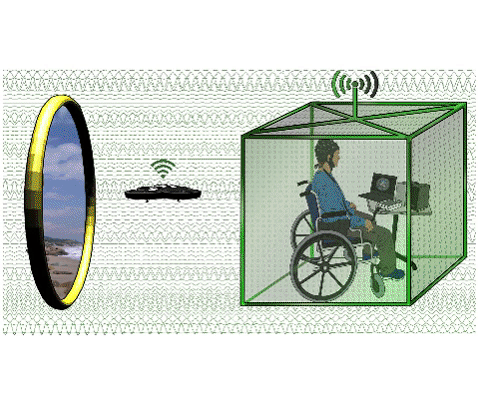Introduction
Major research activities in our laboratory include the development of innovative methodologies for noninvasive imaging of and interaction with the brain and the heart that allows assessment of functional status of the organ systems, investigation of functions and dysfunctions of the brain and heart using the imaging methods, development of techniques to image electrical properties of tissues, brain-computer interface research for neural prosthetics and other applications, and neuromodulation for cognitive studies and neurodegenerative diseases.
The importance of determining the functional status of the brain is self-evident, yet establishing a high-resolution spatio-temporal imaging modality remains a challenging research field. Innovative engineering advancements are essential to achieve such a goal. Of innovation is the development of electrophysiological source imaging which greatly enhances the spatial resolution of EEG, resulting in an economic and convenient means for cognitive neuroscience research and applications to diagnosis and treatment of neurological diseases. Multimodal functional neuroimaging provides high resolution in both space and time, by integrating functional MRI and electrophysiological neuroimaging.
Neural interfacing and prosthetics have shown promises to “read” the minds of the individuals and translate these thoughts into actions performed via a computer, which aims at restoring function in paralytics by providing the brain with new output pathways. Basic research is being conducted in our laboratory to develop novel non-invasive brain-computer interface systems, which can perform complex tasks reliably and efficiently, including flying a drone or controlling a robotic arm by “thought” alone. Functional neuroimaging approaches are also used to elucidate the neuroscience mechanisms underlying brain-computer interface applications, and for enhancing the performance of brain-computer interface.
Neuromodulation represents an emerging field in neuroengineering that by injecting physical (e.g. electrical, magnetic, acoustic) energy into the brain, we can perturb the neural information processing for the purpose of treating brain disorders, improving quality of life, or even detecting and imaging of brain activity and connectivity. Of innovation is our work in elucidating the mechanisms of transcranial focused ultrasound and developing EEG-guided closed-loop neuromodulation techniques.
In addition to source imaging, we are also pursuing imaging of electrical properties of biological tissues. Electrical properties of tissues are important for accurate source imaging and also contain useful information for clinical diagnosis. The laboratory has pioneered the development of a novel approach called Magnetoacoustic Tomography with Magnetic Induction, by integrating magnetism and ultrasound, for high resolution electrical impedance imaging. We are also developing a cutting-edge technology on Magnetic Resonance Electrical Properties Tomography with potential applications for early cancer detection and improving safety in MRI.
